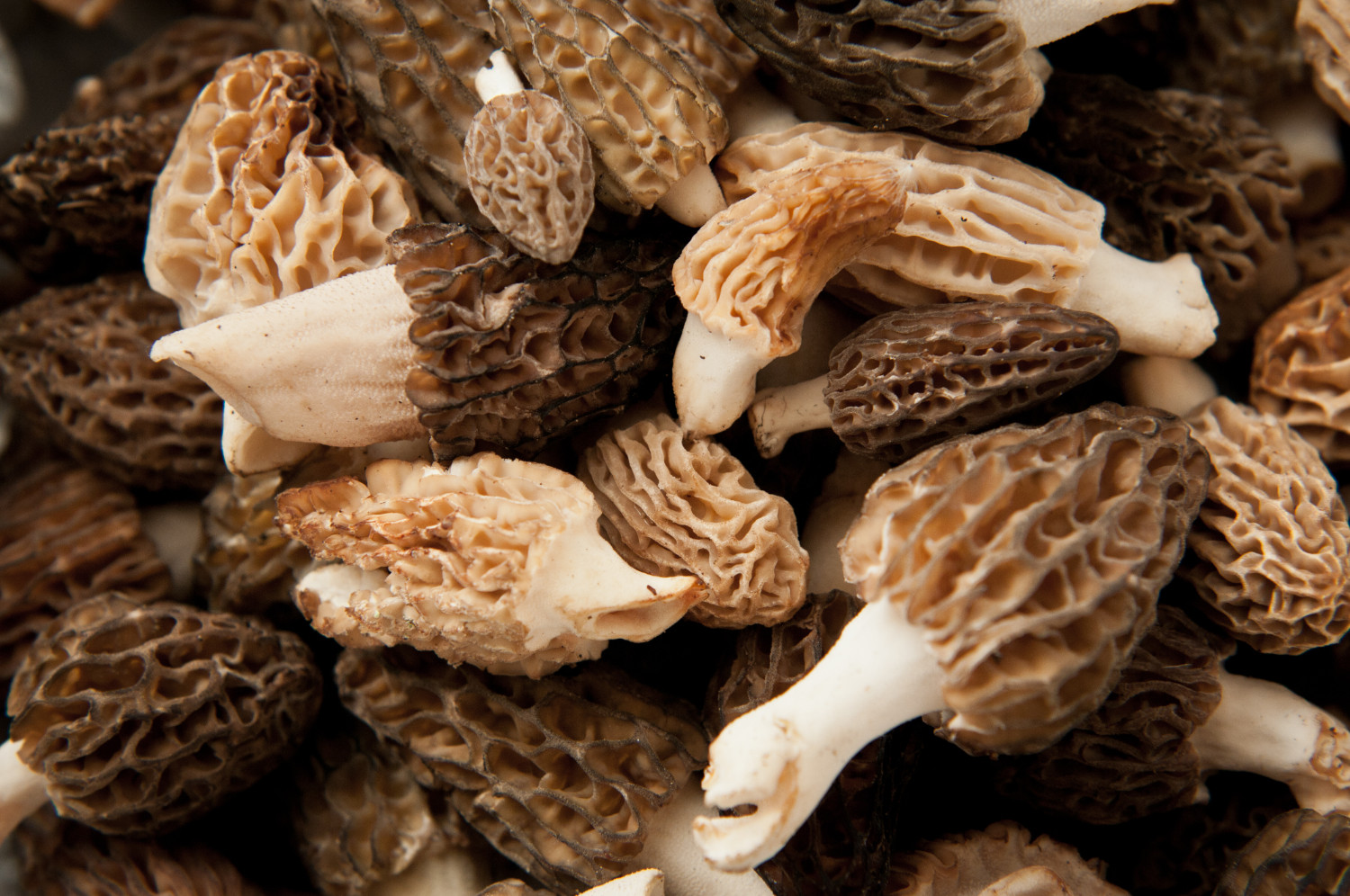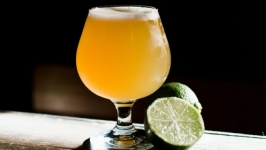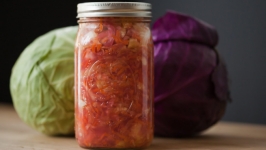Growing Mushrooms for Fun and Profit
Lately I’ve been pursuing a plant-based diet. While I have not nor do I intend to swear off meat, I have made strides in limiting my intake. The decision is partly a health concern, partly in protest to factory farming and perhaps mostly an interest in exploring the myriad ways vegetables can be used to bring the deliciousness.
As a direct result of this pursuit, I’ve been ingesting quite a bit of mushrooms. Why? Mushrooms are, in my opinion, an absolutely essential part of a plant-based diet. They’re healthy sure, but little else in the plant world contains enough of that distinctive umami character to satisfy the cravings of a lifelong omnivore such as myself. (Fun fact: fungi are actually much closer genetically to animals than plants.) I’m not a huge fan of meat substitutes so if anything is going to enable my pivot from meat towards more vegetables, it’s the fungus among us.
I’m not alone in my sentiment. Rebekah Flint and James Kay are also making a go at the plant-based diet. I met the young couple at a mushroom growing workshop I attended recently at the Suwanee County Extension Office in Live Oak. While my intentions are merely to reduce my meat intake to the occasional indulgence, Rebekah and James’ ambitions are to eliminate it from their diet once and for all. “I’m trying to go vegan, but I have my bad days,” confesses Rebekah.
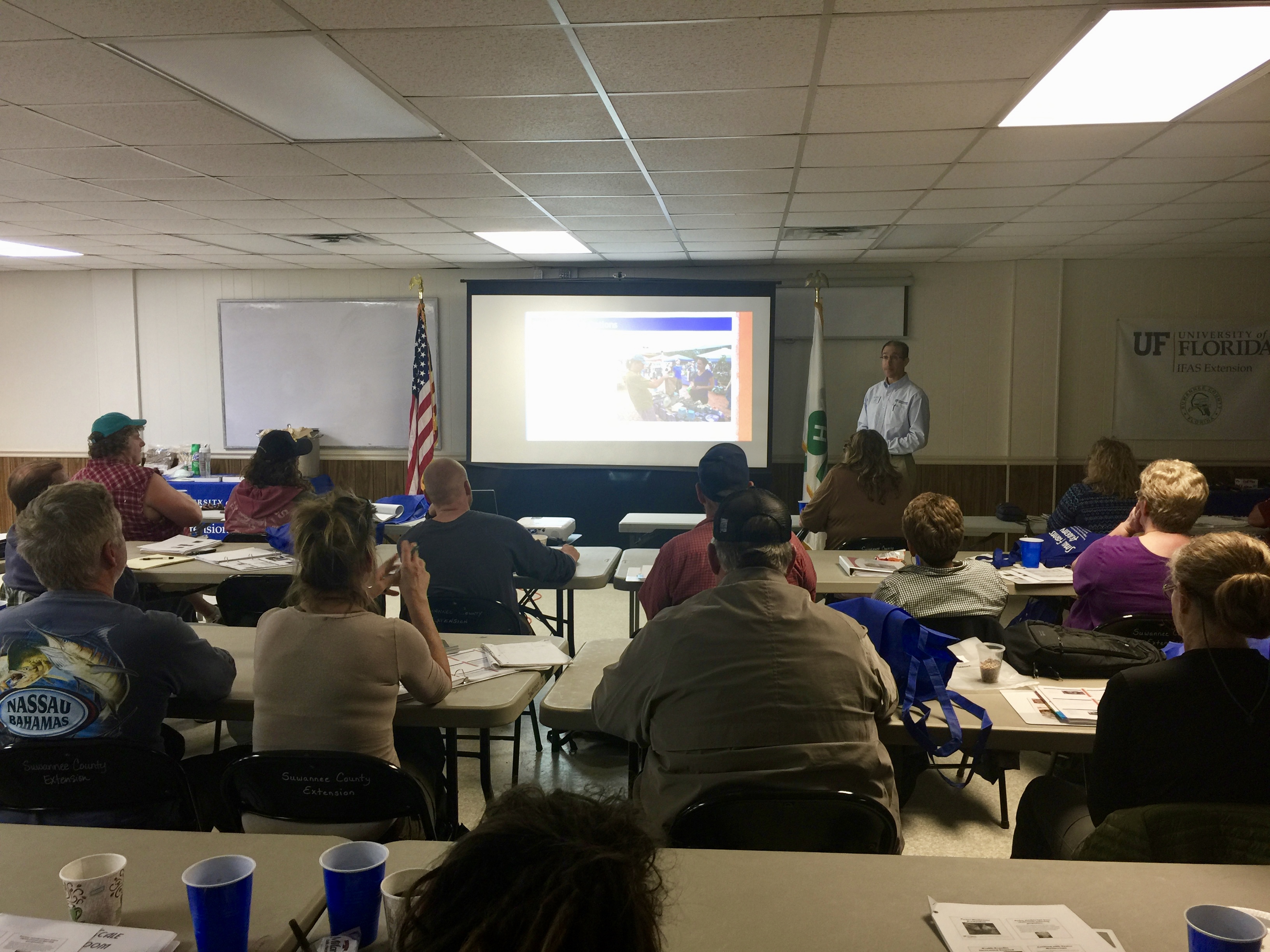
Like me, the couple finds the allure of mushrooms irresistible and appreciates their utility as a meat substitute. Also like me, and other attendees of the workshop, they find the idea of growing their own mushrooms for personal consumption appealing. Bob Scott, a retired schoolteacher and pastor from Madison County attended the course with his grandson. Although Bob looked the traditional part of a farmer, he’s more of a hobbyist who has kept bees for the past three years, selling some of his honey at local markets. When I asked if he has any intention of selling the mushrooms he’ll soon be growing, he nodded towards his grandson and replied, “nah, his family and mine will eat ‘em.”
Most of the students in the class looked like Bob, weathered, salt-of-the-earth types with thick southern accents. I suspect that many are working farmers or at least have it in their blood. Rebekah and James however, looked more like me. Rebekah’s arms were covered in tattoos and her hair fashioned into dreadlocks. James looked less than thrilled to be up so early in the morning even if it did involve pursuing a new hobby. Having made the trip from their home in St. Petersburg, I asked Rebekah how they chose this course in particular to begin learning the art of mushroom cultivation. “I had been looking for courses online for the past two weeks,” Rebekah explained, “so when I saw that this one was longer than the typical hour long class, I knew it was the one.”
Indeed, the workshop was no mere crash course. Facilitated by the University of Florida Institute of Food and Agricultural Services (UF/IFAS) Suwanee County Extension and led by Carolyn Saft, it provided a deep dive into the mysterious yet exciting world of mycology, exploring everything from the specific fungi’s commercial uses and methods for their cultivation to economic considerations for those who intend to turn a profit.
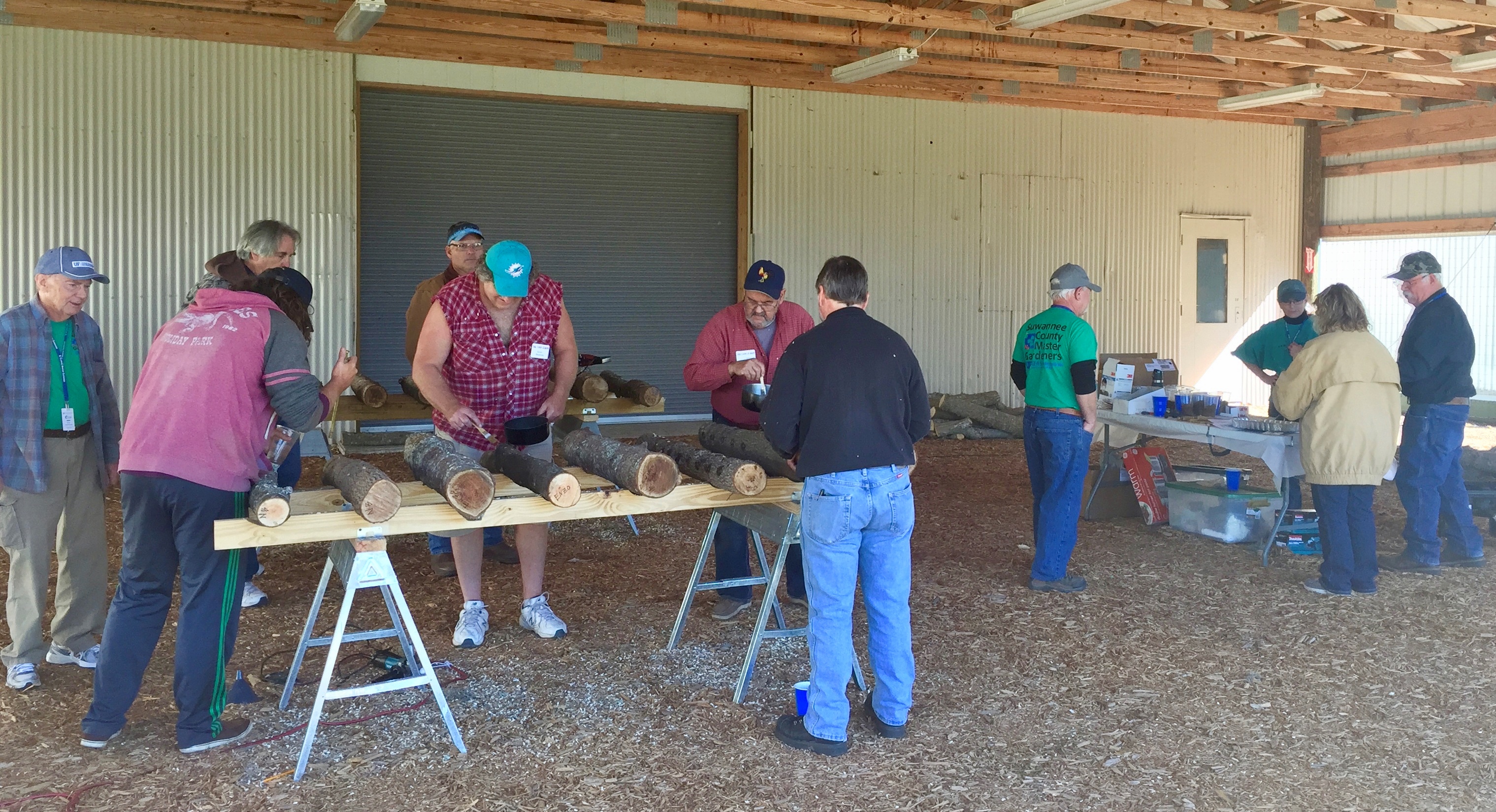
The Cooperative Extension Service program was established under the Smith-Lever Act of 1914 as a partnership between the USDA, state land grant universities and local county governments across the nation. Their mission is to provide research-based education to farmers and laypersons alike, keeping all informed of the latest techniques and technologies. Focused primarily on rural areas, many in the agriculture industry, particularly small scale farmers, are able to learn new ways and best practices for tending their land. Acting as resource centers for the local community, the UF/IFAS extensions attract curious farmers and hobbyists from far and wide. “The Alabama extension offices are great for one-on-one instruction but they don’t offer courses like this that go outside the box like this does,” said Holly Hamm, who has made the seven hour drive from Alabama to attend the course.
Holly owns and operates Friday Farms in Gordo, AL with her wife, whose family has held the 200 acre plot of land for generations. “We’ve always wanted to return the land to its production,” she said. Specializing in blueberries, eggs and ethically-raised pork they recently added beekeeping and honey production to their list of offerings and are gradually expanding their product line. As educators with day jobs, they prefer to stick to things they can handle on their own, so cultivating mushrooms provides an attractive, low-maintenance addition to the farm’s output. The timing for such an endeavor seems to be right for them as well as an opportunity to make a little extra money. “There’s a lot of market in Birmingham, which is becoming pretty foodie,” Holly explained.
The theme of the course, Commercial Uses of “Gourmet” Mushrooms, requires some explanation. Exotic mushrooms don’t feature prominently in the staples of traditional Southern cooking but as larger cities in the south continue to become more metropolitan and the locavore movement continues to gain traction, the demand for more specialized foodstuffs that can be locally sourced presents an opportunity for these farmers to diversify.
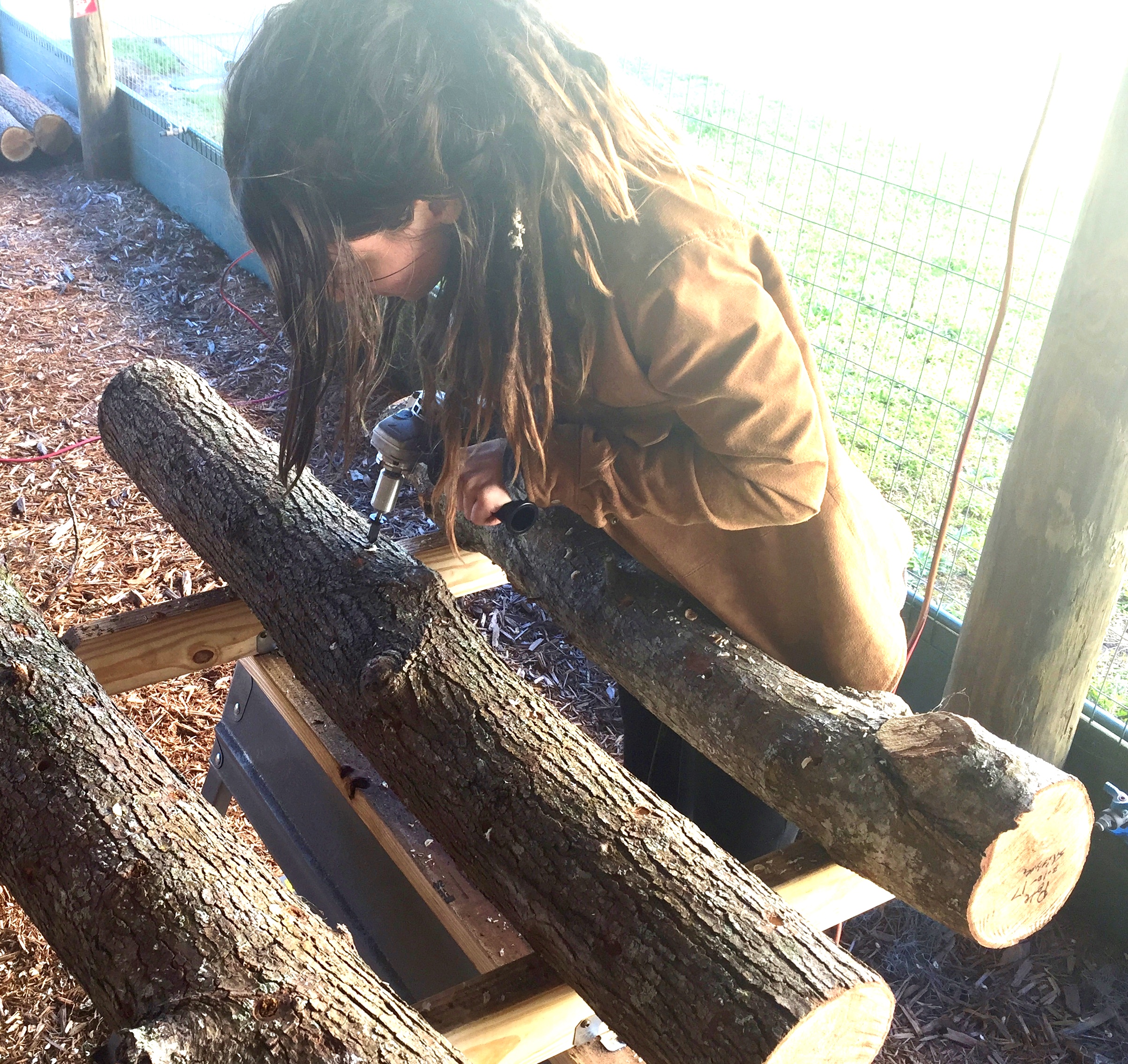
Mushrooms in general are low calorie, low cholesterol, low sodium and a great source of dietary fiber. They also provide a low fat source of protein, are high in vitamins and minerals and contain powerful antioxidants. One of the specific species addressed in the course, Oyster mushrooms, can actually lower cholesterol; this variety has skyrocketed to become the third most widely produced mushroom in the country, finding their way onto our plates in pastas and as an accompaniment to fish, lamb, or pork. The pink and yellow varieties make for an enchanting garnish to a plated salad.
Shiitakes were also presented in the course. They are surprisingly meaty and quite versatile. Packing significantly more flavor than the standard button mushroom, shiitakes are used in everything from a nice sauté to a hearty roasting, for frying and even grilling. In Japanese cuisine they are practically a staple lending their meaty, umami flavor to dashi stocks or swimming humbly alongside sliced scallions in a basic miso soup. They can be stored in the refrigerator for as long as three weeks or dried and kept almost indefinitely, jumping back to life with nothing more than a little rehydration.
After the case for mushrooms was made, the course really got interesting as methods for cultivating shiitake and oyster mushrooms were not only explained but demonstrated in break-out sessions. These demonstrations are helpful for visual learners like me; the interactive hands-on approach allows every student to experience the process of inoculating logs and bags with mushroom spores that under the proper conditions will yield delicious mushrooms for some time. In fact, as part of the course, each student takes home two shiitake logs and two oyster mushroom bags to jumpstart their very own mushroom farm.
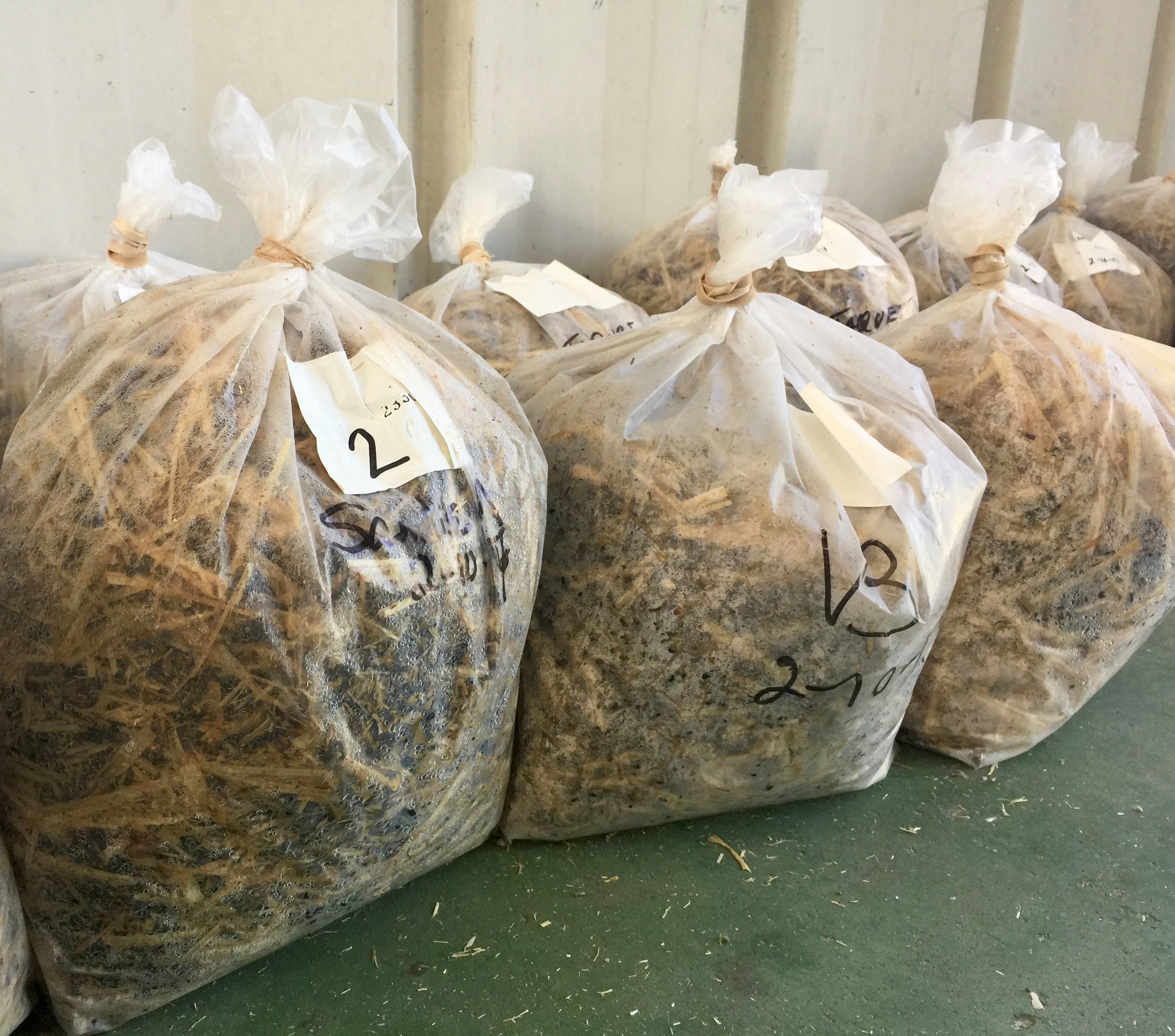
The process of starting a mushroom producing operation is actually quite labor-intensive. In the case of shiitakes, suitable logs must be harvested from young, dormant trees of a specific girth with plenty of sapwood and as few branches, blemishes and wounds as possible. Not just any tree will do either. Deciduous oaks work best such as turkey, black jack, water and laurel oak. Live Oaks, unfortunately, are semi-deciduous and less productive despite their abundance in the area. The USDA’s Sustainable Agriculture Research and Education program recently completed a study on the effectiveness of using invasive, non-native tree species and found some success with Chinese tallow. Once harvested and prepared, the logs are inoculated by drilling holes, filling them with sawdust spawn and sealing them with wax. After a four to nine months’ colonization period wherein the mycelium, the “plant” part of the fungus, grows beneath the bark, feeding off the sapwood, fruiting (the formation of the mushrooms) can begin. This can happen naturally after a rain and a cold snap or forced by soaking in ice water. A fruiting can then be forced every six to nine weeks with the logs producing for four to five years and yielding as much as three to five pounds over the life of the log.
Oyster mushrooms are slightly less of a hassle. A substrate of wheat straw and cottonseed hulls is first pasteurized and then packed into special bags along with the spawn. Kept in the dark, colonization occurs in as little as three weeks before fruiting can be forced. Harvestable mushrooms become available in a matter of weeks and each bag is good for two to three harvests. The entire process can be accomplished indoors in even the smallest of apartments.
The course concluded by answering the most important question: Can you make money growing mushrooms? The answer is, as you may have guessed, “it depends.” To elaborate, Kevin Athearn, Ph.D. broke down the costs and potential income of starting and maintaining a mushroom operation. As the Regional Specialized Agent in Rural and Agribusiness Development, his work is focused on assisting new and experienced farmers prepare budgets and marketing plans to compete in today’s food market.
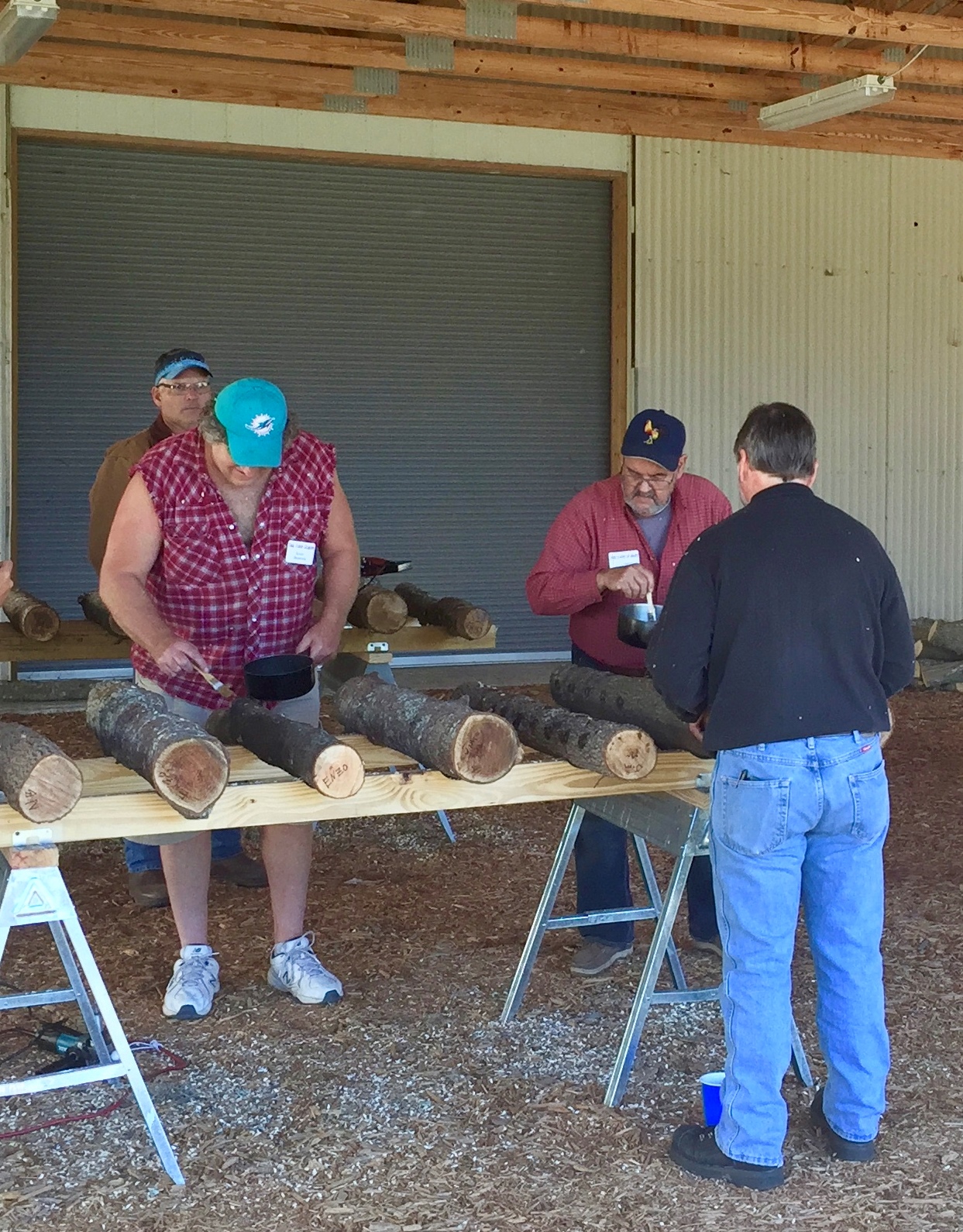
The trends he presents are compelling. Demand for mushrooms is on the rise and skews favorably towards specialty mushrooms. But so is production, and while prices for shiitakes are increasing, oysters and other specialty mushrooms cost less than they did three or four years ago. Selling bulk mushrooms wholesale presents challenges that new farmers may find quite daunting and at between $3-6 per pound, it seems to make more sense to focus on niche direct-to-consumer markets where customers are willing to pay as much as $15-20 per pound for locally produced fungi. Of course, that route is not without its own challenges as the scale of even a modestly profitable shiitake operation requires hundreds of logs and the necessary shade and water. In fact an analysis of a 480 log operation begins to net only around $3,000 annually after four years, making them a suitable addition to a productive farm or garden but hardly a significant source of income on its own.
While my aspirations of setting up a one-man backyard mushroom farm may have been shattered, I’m excited about the prospect of being able to count on a steady supply of free exotic mushrooms and should I ever be so fortunate as to one day acquire some farmland of my own, I will definitely consider incorporating mushroom cultivation into the mix. In the meantime, I can only hope to see an increase in the availability of locally cultivated shiitake and oyster mushrooms from our region’s hardworking farmers both in markets and on the menu at local restaurants.
For more information on workshops and classes, visit UF/IFAS Small Farms and Alternative Enterprises.


